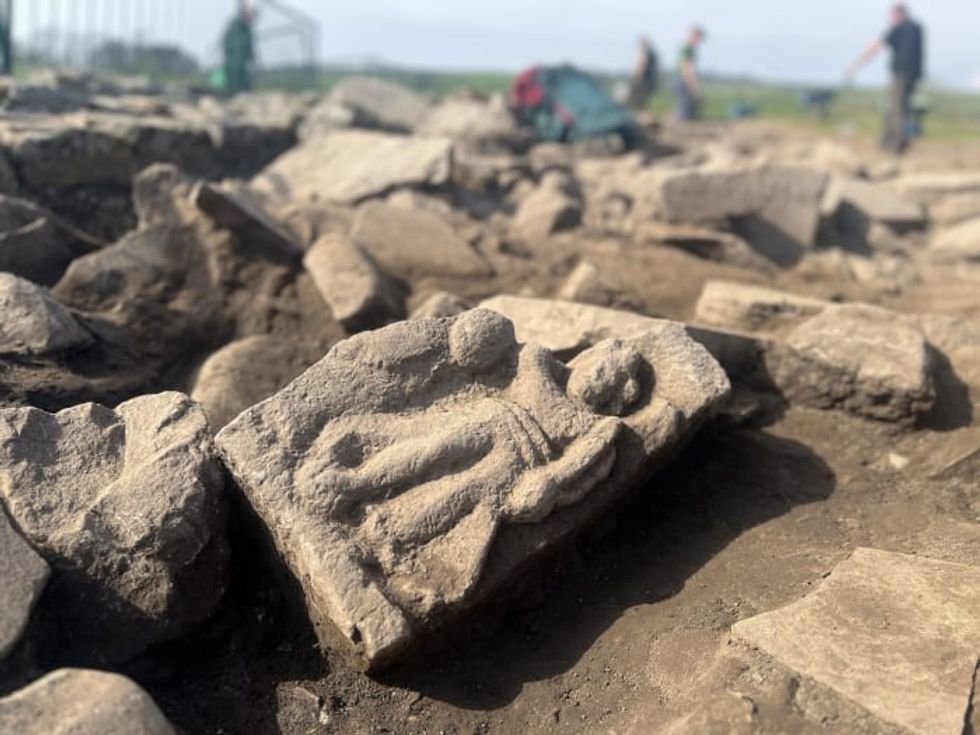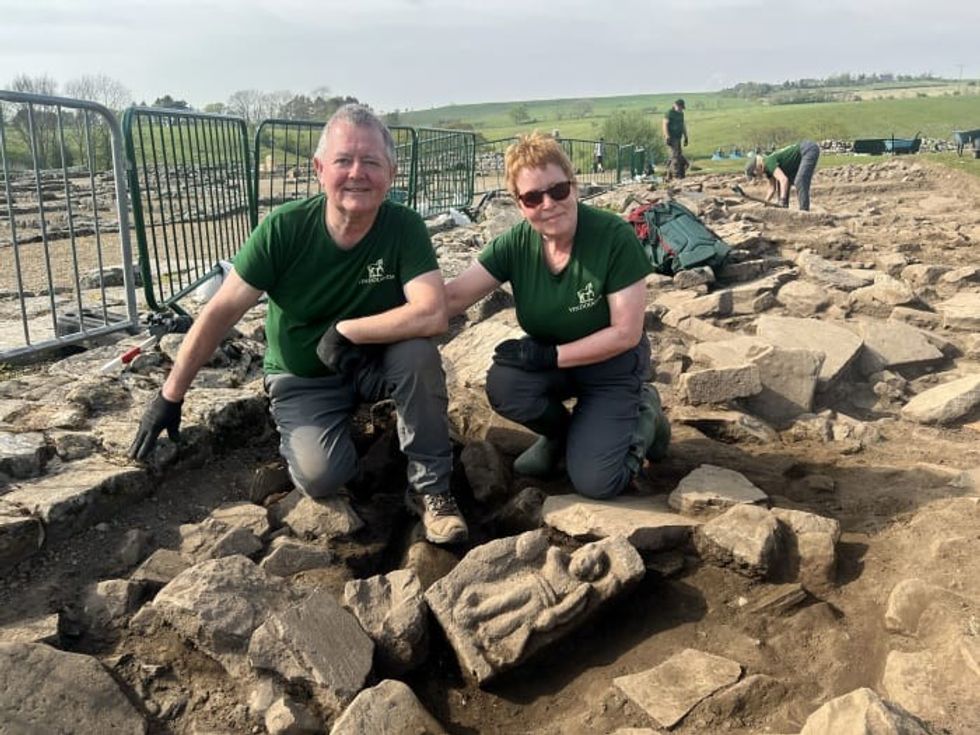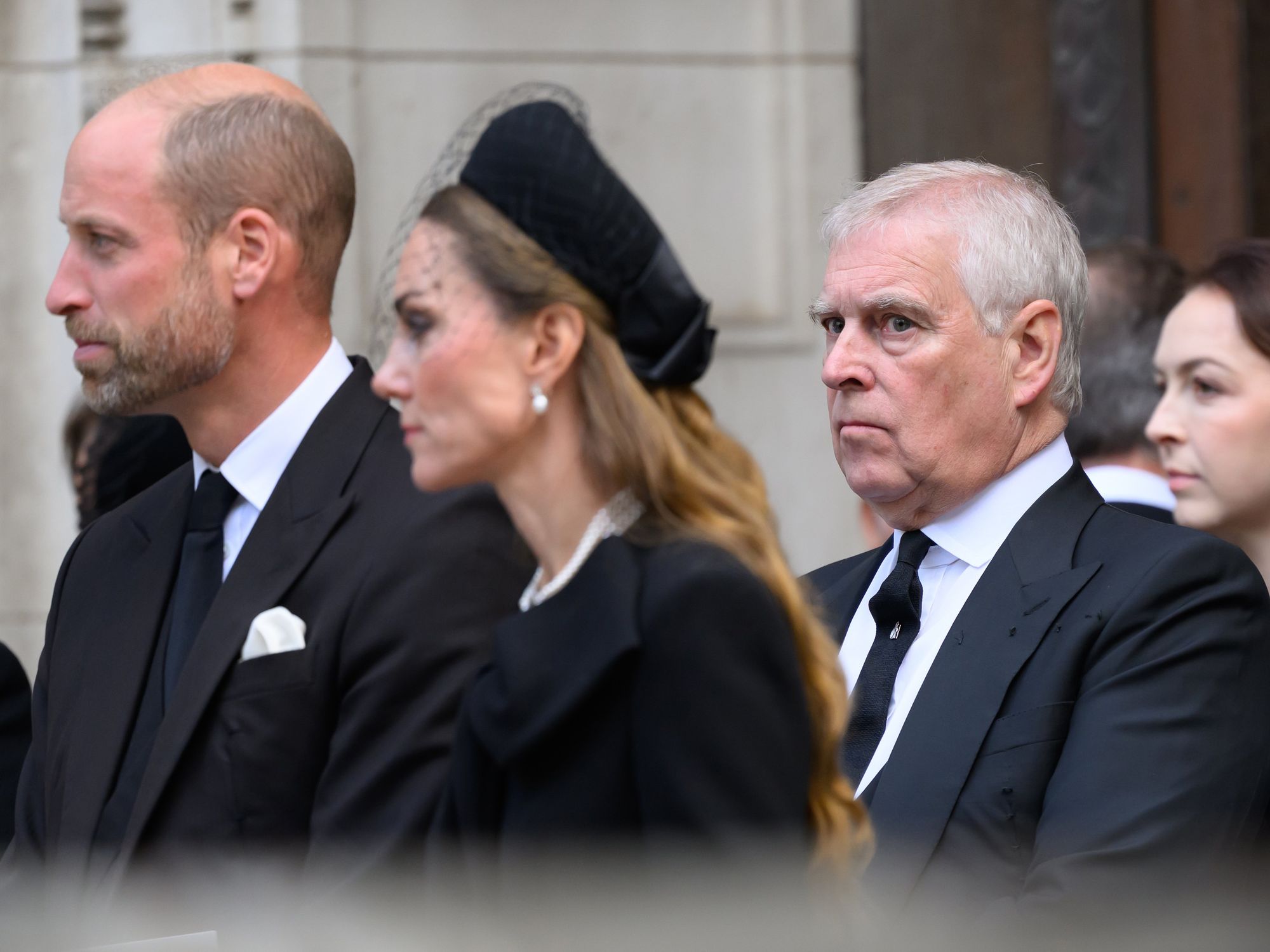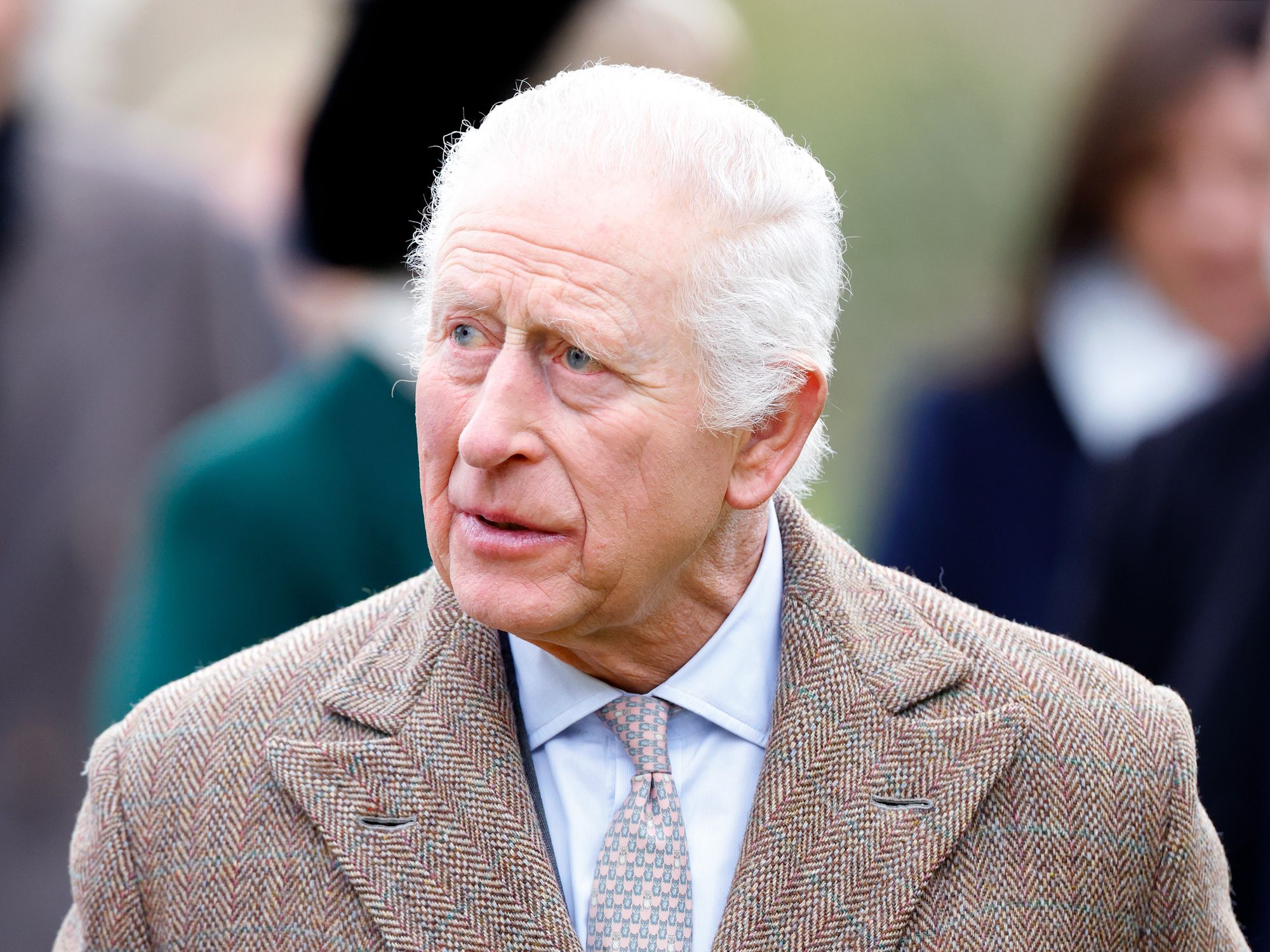Archaeology breakthrough as mysterious winged goddess unearthed at Hadrian's Wall
The find was discovered by a group of volunteer archaeologists
Don't Miss
Most Read
Latest
A striking Roman stone relief depicting the winged goddess of victory has been unearthed near Hadrian's Wall by a volunteer couple during an archaeological excavation.
Dilys and Jim Quinlan, from Merseyside, made the remarkable find at the Vindolanda Roman fort site near Hexham, Northumberland.
The couple, who have been volunteering at the site for 21 years, discovered the ancient carving whilst clearing rubble above the site's infantry barracks.
The 47cm-tall stone relief has been identified as Victory, the personification of victory in Roman religion and mythology.

The stone has been identified as Victory, the personification of victory in Roman religion and mythology
|Vindolanda
Dilys Quinlan, 69, works in healthcare, while her husband Jim, 68, is an engineer with Liverpool City Council.
The dedicated couple regularly travel from their home near Liverpool to assist archaeologists at the Vindolanda site.
Dilys said: "We've spent the vast majority of our annual leave at Vindolanda over the years. As veteran diggers, it is without doubt the most wonderful thing we've ever done and, importantly, it's something we do as a couple.
"It's the best form of relaxation that we know of. We eat well, sleep well, we're in good company, and there's always more to learn. What more could you ask for?"
LATEST DEVELOPMENTS
The couple made their exciting discovery while clearing rubble during their volunteer work at the historic site.
Dr Andrew Birley, director of excavations at Vindolanda, said: "There is that sense of palpable excitement when you turn over the 2,000th piece of Roman rubble and you see on the other side the face of a goddess staring right back at you.
"What you get there is a direct connection. It's almost like you're touching the past and all those years melt away, which is just wonderful."
The stone relief dates to around AD213, a period just after the tumultuous Severan wars in Britain.

Dilys and Jim Quinlan made the remarkable discovery
|Vindolanda
Birley's father, Robin, led the team that discovered the Vindolanda writing tablets in 1973, which provided first-hand accounts from those who lived at the site 2,000 years ago.
When asked if they wished they had become professional archaeologists, Dilys said: "We're happy with the public service work that we do. Archaeology for us is a really great hobby."
Popularity for archaeology is growing at Vindolanda, with applications filling "in about a minute".
The excavation team receives approximately 4,000-5,000 applications annually but can only accommodate 500 volunteers.
Dr Birley added: "We feel very much part of the Vindolanda 'family', playing our small part in adding to the knowledge base of life on the frontier, but importantly, above all else, being part of something that is greater than yourself."











